Jump on the bandwagon of cannabis cultivation legalization
A cannabis grow light is used to implement light recipes developed for optimal growth and development of cannabis plants that are cultivated in indoor farms or greenhouses. Spurred on by the recent legalization of medical and recreational marijuana in a growing number of states in the United States, cannabis cultivation is rapidly advancing to adopt sophisticated controlled environment agriculture (CEA) technologies. The horticulture industry has been undergoing a radical transformation fueled by the need for high quality, high yield growth of cannabis plants. Growing cannabis in a CEA facility allows control over air temperature, humidity, nutrients, carbon dioxide, water, and light, all of which can be modified and adjusted to enable year-round production and improve plant yields. The control or elimination of insectile, fungal or bacterial pests and other unpredictable factors is also more effective because of the closed environment.
As with other plants, cannabis is an autotroph that evolved the ability of harvesting the energy from solar radiation to drive its growth and development. Depending on the type of CEA facilities, there is either absence of naturally occurring light or inadequate solar radiation due to cloudy days and seasonal variations. The use of artificial light therefore becomes an essential need.
What is cannabis (marijuana)
Cannabis is a flowering, annual, herbaceous plant that has three distinct species: C. sativa, C. indica, and C. ruderalis. Most recreational or medicinal varieties are C. sativa, C. indica or a genetic hybrid of these two. Cannabis is a dioecious (unisexual) plant so its male and female varieties are distinct plants. Depending on the psychoactive compound ∆9-tetrahydrocannabinol (THC) content of the dried inflorescence, cannabis is legally classified either as marijuana or hemp. Marijuana refers specifically to female cannabis plants containing high levels of THC (a minimum 0.3% of the dry weight). Hemp plants are grown for fiber and grain production and are defined as cannabis plants having less than 0.3 percent THC.
Cannabis plants are a rich source of biologically active compounds (secondary metabolites), including more than 100 plantderived cannabinoids (phytocannabinoids) and more than 200 terpenoids (chlorophyll and carotenoids). Cannabinoids are a unique class of terpenophenolic compounds found only in cannabis. Cannabis for recreational or medicinal uses is cultivated with an emphasis on the genetics of cannabinoid synthesis.
Among the different phytocannabinoids, THC is the primary metabolite responsible for the psychoactive effects responsible for the characteristic intoxication (high) which follows the smoking or ingestion of cannabis. The psychoactive effects are exerted by binding to specific receptors within the brain and other parts of the body.
Another major compound is cannabidiol (CBD), which is non-psychoactive but has antagonistic effects to THC because it is a sedative compound. CBD has a wide range of medical benefits that have been demonstrated in clinical trials. These benefits include the prevention of vomiting, reduction of inflammation, treatment of psychotic symptoms of patients with Parkinson’s disease, management of pain and spasticity in multiple sclerosis, and the mitigation of symptoms of epileptic seizures.
In addition to THC and CBD, other phytocannabinoids, such as cannabigerol (CBG), cannabinol (CBN) and cannabichromene (CBC), also show therapeutic potential.
What are phytocannabinoids
Phytocannabinoids have the potential to provide many therapeutic benefits by modulating various signalling pathways involved in multiple diseases while being capable of producing psychoactive effects that many recreational consumers look for. Hence, indoor cannabis cultivation revolves around targeted manipulation of phytocannabinoid profiles to ensure high concentrations of therapeutic and psychoactive cannabinoids.
Phytocannabinoids are predominantly produced in glandular trichomes of perigonal bracts, subtending flowers, and leaves. Glandular trichomes are made of globular structures supported by stalks. These epidermal protuberances are found most abundantly in the female inflorescences. Phytocannabinoids along with other secondary metabolites are secreted through a series of enzymatic synthases in the glandular trichomes. Cannabigerolic acid (CBGA), the precursor substrate for production of THC and CBD, is synthesized by a prenyltransferase from geranyl pyrophosphate (GPP) and olivetolic acid (OA) by a prenyltransferase. It is then metabolized into tetrahydrocannabinolic acid (THCA) and cannabidiolic acid (CBDA), which are phytocannabinoids in the carboxylated form.
The formation of phytocannabinoids and other secondary metabolites is not associated with the growth, development or reproduction of the plant. They are a part of the plant’s defense mechanism, which are synthesized under environmental stresses and adapt the plant to an everchanging environment.
The energy source to drive photobiological processes in cannabis plants
Among the factors influencing growth and development of cannabis plants, an important one to account for is light. Light is the energy source for plants to drive photosynthesis and other photobiological processes. The process of photosynthesis is a photochemical reaction that occurs inside cytoplasmic organelles known as chloroplasts. Within chloroplasts, photosynthetic pigments absorb energy from light and activate photoexcitation which results in the splitting of water molecules into oxygen, hydrogen ions and free electrons in a higher energy state. The high-energy electrons are used to produce NADPH and ATP which then reduce carbon dioxide (CO2) and convert it into carbon atoms in organic molecules (carbohydrate molecules), such as sugars. These sugars are used to fuel primary metabolic processes for production of leaves, stems, roots, and floral organs of cannabis plants.
The photosynthetic photosystem uses chlorophyll A, chlorophyll B and carotenoids to create photochemical energy. Chlorophyll A accounts for the majority of photosynthetic activities. Chlorophyll B and carotenoids are accessory pigments that collect photonic energy and passes it on to Chlorophyll A. These photoreceptors are selective in the wavelengths of the photons they absorb. Chlorophyll A and B absorb light maximally in the red and blue regions of the electromagnetic spectrum and more weakly in the green. The photosynthetic efficiency of chlorophyll A and B peaks at 680 and 640 nm in the red region, respectively, and 430 and 460 nm in the blue region, respectively. Carotenoids such as carotenes, xanthophylls, lutein, zeaxanthin, antheraxanthin, and violaxanthin absorb light strongly at wavelengths between 400 and 550 nm. They not only extend the absorbance range of the photosynthetic photosystem into the green region, but also protect chlorophylls from photooxidation by dissipating excess photons as heat.
Stimulate non-photosynthetic photoreceptors
Cannabis plants have a range of other photoreceptors that are not involved in the conversion of the photochemical energy from light into biological energy for carbohydrate production. Instead they regulate physiological processes such as photomorphogenesis, photoperiodism, and phototropism that control plant development. These non-photosynthetic photoreceptors are capable of collect environment cues from the quantity, quality, direction and duration of irradiance. They perceive light as a signal which guides plants in acclimation of photosynthesis to available irradiance and facilitation of developmental adaptation.
The interactive network of signal-transducing photoreceptors, each of which detects irradiance at specific set of wavelengths, include phytochromes, cryptochromes, phototropins, and UVR8.
Phytochromes mediate physiological responses related to chlorophyll biosynthesis, seed germination, stem elongation, leaf expansion, flowering induction, etc. They exist in inactive (Pr) and active (Pfr) forms which absorb red light maximally at 660 nm and far-red light maximally at 730 nm, respectively. Upon irradiation of red light Pr is activated Pfr. Exposure to far-red light or darkness will reverse the conversion from Pr to Pfr. The red:far-red ratio (R:FR ratio) of light can be used to predict the likelihood of the shade avoidance syndrome (SAS). Low light intensities and a low R:FR work together to induce the SAS which may lead to developmental changes such as leaf hyponasty (leaf movement), stem or petiole elongation, premature flowering, reduced branching, increased leaf senescence, and directional growth away from shade of actively growing tissues.
Cryptochromes are involved in the regulation of germination, elongation, photoperiodism (circadian rhythm), pigment synthesis, normal chlorophyll and chloroplast development, secondary metabolism, and inhibition of hypocotyl elongation. Phototropins mediate phototropism (plant movement towards light), stomatal opening, chloroplast movement, leaf flattening, and de-etiolation of the hypocotyl. Both cryptochromes and phototropins are also blue/UV-A absorbing photoreceptors. Cryptochromes use light having a wavelength spectrum in the range of 300 nm to 500 nm though it most strongly absorbs at 350 nm (UV-A) and 450 nm (blue). Phototropins have an absorption peak at 450 nm. Cryptochromes regulate gene expression whereas phototropins regulate cellular processes without activation of gene expression.
UVR8 reacts specifically on UV-B (290-320 nm). Short wavelength irradiation has been shown to increase the stress tolerance of plants by inducing metabolic activity, such as phenolic compound synthesis.
The effective application of light is essential for cannabis cultivation
Three principal characteristics of light affect the growth and development (photosynthetic rates, morphology, production time, and yield), health (insect, disease, and stress resistance), and the chemical content (THC, CBD, terpenes, etc.) of cannabis plants: quantity (intensity or photon quantity), quality (spectral composition), and duration (photoperiod).
Electromagnetic radiation over the spectral range of 400 nm to 700 nm that photosynthetic photoreceptors are able to use in the process of photosynthesis to split water (H2O) and fix carbon dioxide (CO2) to form carbohydrates (CH2O) and oxygen (O2) is referred to as photosynthetically active radiation (PAR). The quantity of light is the amount of photons in the PAR region landing on a plant canopy or specified area, which is frequently referred to as photosynthetic photon flux density (PPFD).
The photosynthetic rate increases in a linear fashion with PPFD until the light saturation point is reached. For tissue culture production, the PPFD needs to be set low (60-80 μmol/m²/s). The PAR requirement in seedling and cutting stages necessitates a PPFD between 150 and 350 μmol/m²/s. Cannabis plants in a vegetative state would usually require a middle range quantity of irradiance (400-600 μmol/m²/s). The highest PAR requirements occur in the flowering stage. Cannabis flourishes under irradiation anywhere from 900 to 1200 PPFD in full bloom.
Action spectrum
Since cannabis utilizes light within a limited range of wavelengths for photosynthesis, photomorphogenesis, photoperiodism, and phototropism, the spectral quality of light plays a significant role on the effectiveness of light in controlling all biological processes. The two most important absorption peaks of photosynthetic photoreceptors are located in the red and blue regions. Hence, optimal plant growth tends to require ample reds and blues. Different types of photoreceptors overlap in their light absorption ranges.
The interaction between photoreceptors under active irradiation of the same spectral range should be thoroughly considered. The ratio of red to blue light must be carefully selected, as blue light is not only harvested by photosynthetic photoreceptors, but also absorbed by signal-transducing photoreceptors such as cryptochromes and phototropins. Excess blue irradiation may lead to growth inhibition. Generally, plants exposed to more red light tend to grow faster and taller, resulting in increased internode spacing and more room for bud development, but with thinner stems and smaller leaves. Irradiation with a high blue to red ratio encourages stronger vegetative growth and chlorophyll synthesis. Plants exposed to more blue light tend to have compact and bushy growth which is characterized by thick leaves, lateral bud growth, strong stems, and short internodes.
Red and blue light is absorbed by upper or outer leaf layers of closed leaf canopies. Green light can penetrate deeper into both canopies and individual leaves, further than red and blue, and therefore provide additional photosynthesis in cells/leaves that are not reached by red and blue light. In addition, wavelengths outside the PAR region can be critical to plant development. Far red light (700-750 nm) works with deep red light to trigger or inhibit a number of developmental processes which include seed germination, leaf unrolling, chlorophyll formation, and stem elongation as well as flowering in photoperiodic plant species. Provision of UV-B radiation between 280 and 315 nm can increase plant stress tolerance which leads to significantly higher quantities of THC being produced. While exposure to UV-A light (320-380 nm) does not stimulate THC production, the short wavelength light penetrates more deeply than UV-B and may encourage trichome production which in turn facilitates the production of THC.
Daily light integral (DLI) requirements
For cannabis plants, day length is a critical cue to transition from vegetative to reproductive growth. Cannabis plants in stock production, propagation and vegetative stages typically require 18-hour photoperiods. Cannabis plants are short-day species, which means only by limiting the length of light period and increasing the length of darkness can a cannabis plant be flowered. A shorter photoperiod of 12 hours is required as soon as the plant enters the flowering stage. Only once flowering is initiated and the plant begins to allocate more of its energy in calyx production to increase surface area for the glandular trichomes in the female inflorescences does the plant begin to produce phytocannabinoids in abundance.
While there is a reduction in the photoperiod, the amount of PAR a cannabis plant receives over the duration of the photoperiod should meet the minimum daily light integral (DLI) requirements. The shortened photoperiod creates the need for high-intensity PPFD lighting in order to address the high light demand of the critical flower stage. The flowering stage of cannabis pants requires a DLI of 25-60 mol/m²/day.
The poor economics of HID lighting
Cannabis grow lights attempt to stimulate plant growth and development by delivering electromagnetic radiation with the spectral composition and photosynthetic photon flux (PPF) tailored to the needs of the cannabis plants. High-intensity discharge (HID) fixtures, which are equipped with high-pressure sodium (HPS) or ceramic metal halide (MH) lamps, had been the primary incumbent horticulture lighting used in greenhouses and sole-source single level farms. Typical HID grow lights draw 400 to 1000 watts of power and deliver PPF output ranging from 400 to 1500 μmol/s. While HID fixtures are capable of delivering adequate photosynthetically active radiation with a decent photosynthetic photon efficacy (PPE), they lack the ability to tailor the spectrum for a specific application. The broad but fixed spectrum is loaded with green, far-red, and infra-red wavelengths that plants may not use.
Despite their high output, delivering high density irradiation with HID lights to max out the flowering of cannabis plants has always been limited by the distance that the HID fixtures need to be kept from the plant canopy since the lamps radiate a high percentage of thermal energy as infrared (IR) light. Indoor cannabis cultivation is an energy-intensive application with lighting accounts for the largest energy expense due to the long running hours and relatively high wattages typically involved. Low spectral efficiency and hardly any potential to improve wall-plug efficiency increasingly challenge the economics of HID lighting over recent years.
LEDs deliver breathtaking opportunities to improve the value of lighting
The use of LED technology is on course to become the dominant practice across all lighting applications. LED lighting has a great deal to live up to in horticultural lighting applications. The technology pushes the boundaries of operational efficiency and system reliability to deliver a total cost of ownership (TCO) that is considerably lower than traditional technologies. The best-in-class LED grow lights have a PPE as high as 3.8 µmol/J, which is more than twice that of the double-ended HPS (1.7 µmol/J).
IR-free lighting allows the grow lights to be mounted in close proximity to plants, which significantly improves lighting application efficiency (LAE) and enables multi-layer cultivation in vertical farming facilities.
The spectral power distribution (SPD) of LEDs and LED luminaires can be precisely engineered. Spectral control can not only maximize the effectiveness of the light spectrum for the lighting application but also make it possible to target specific wavelengths for the best plant absorption.
Control capabilities set LED grow lights apart. Instantaneous control over a wide range of intensity and excellent aging resistance to frequent on/off switching provide the ability to deliver the right amount and spectrum of light on demand. This equates to unprecedented control over light recipes for all stages of indoor plant growth from, seedling, cloning, all through vegetative to flowering and harvest phases.
With what is on the horizon with the Internet of Things (IoT), actionable insights can be synthesized from massive streams of real-time data and lighting can be optimized based on the sensed environment for maximal crop yields at minimal energy expenses.
Unprecedented spectral controllability delivered by LED grow lights
LED grow lights for cannabis cultivation are generally high power systems that operate at several hundreds of watts and deliver PPF in a range of between 1000 and 3000 μmol/s. These luminaires are commonly designed as multi-channel systems that incorporate multiple, independently controllable group of LEDs to deliver the full spectrum of light suited for the different stages of plant growth as well as the different spectral needs for the various photoreceptors.
The spectrum of light emitted by LED grow lights can be engineered at the chip-, package-, or module-level. The SPD of single-color LEDs is controlled by varying the bandgap between the valence and conduction bands of a semiconductor active layer of the LED chip. At the package-level, the narrow-band emission of the LED chip can be converted to a broadband, polychromatic emission through the application of phosphors. The phosphors partially or completely Stokes shift blue or violet light to a longer wavelength. The use of the color-mixed architecture provides the ability to the tune the SPD of light emitted by an LED module by mixing together several monochromatic LEDs, such as red, green, and blue.
Typically, most LED grow lights use a light engine that is comprised of a plurality of phosphor converted broadband white LEDs, along with additional channels of monochromatic LEDs. The addition of monochromatic LEDs is intended to supplement the spectral composition or to increase the emission in a specific spectral waveband.
New technology, while exciting, requires thoughtful design and engineering
The design of an LED grow light is a multidimensional work which revolves around integrating the LEDs with the other luminaire components. LEDs are complex devices designed to operate under specified ranges for temperature and electrical power. High power operation of cannabis grow lights can introduce tremendous operational stresses. The LED luminaire provides electrical supply, mechanical integration, thermal handling, and optical distribution for the LEDs. An integrated design is implemented to minimize the operational stresses applied to the LEDs so that they can perform its required functions for the require period of time.
Light source
LED package selection and system design go hand in hand. Horticulture LEDs employ various package platforms, which include ceramic-based high power packages, chip-scale packages (CSP), chip-on-board (COB) packages, and mid-power plastic leaded chip carrier (PLCC) packages. CSP and high power LEDs are designed with a high efficiency thermal path that allows for high drive current operation for high PPF output with excellent photon flux maintenance.
Thermal management
High power LED systems produce a high thermal load that must be removed from the LED junction. The thermal resistance of all components along the thermal path from the LEDs to the surrounding environment should be minimized to ensure high efficiency thermal transfer. Passive (natural convection) heat sinks are always preferred for their reliability, low power and silent acoustics. When the thermal load of an LED grow light is too high to be properly dissipated by passive means, active cooling should be used to address the thermal management needs.
Drive current regulation
The LED driver which runs off line power needs to provide a well-regulated DC current to the LEDs in any given configuration. Most high power LED grow lights use two-stage SMPS drivers that operate with high conversion efficiency and reliability. They often incorporate dimming circuitry and accept control input transmitted using 0–10VDC, DALI, DMW, or a wireless communication protocol.

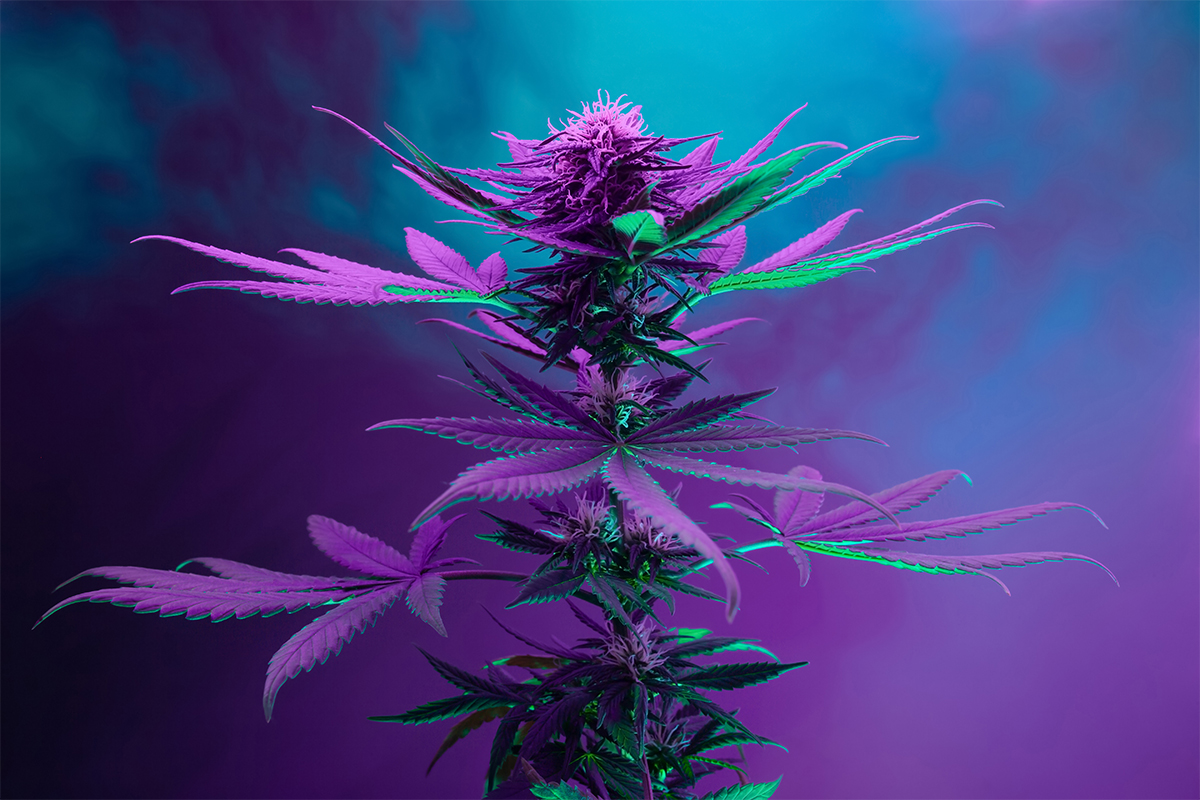
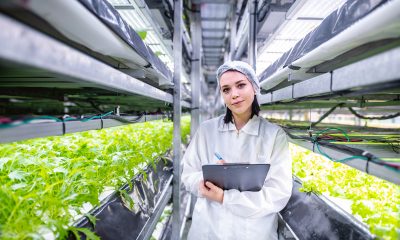
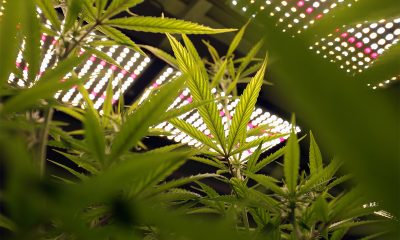
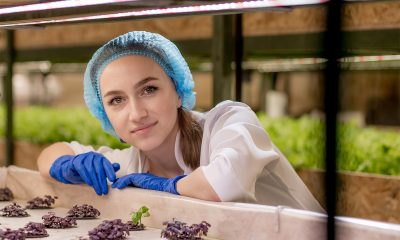
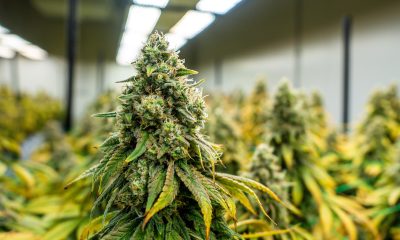
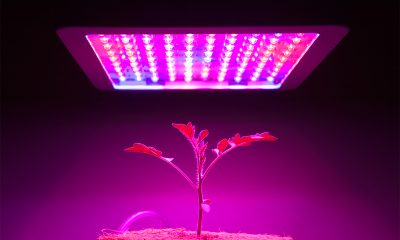
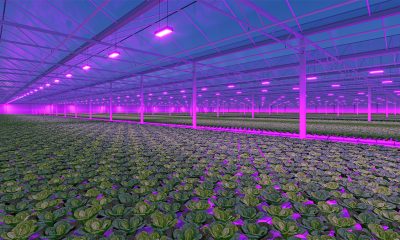
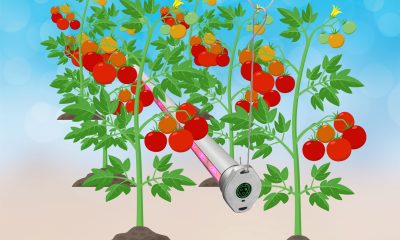
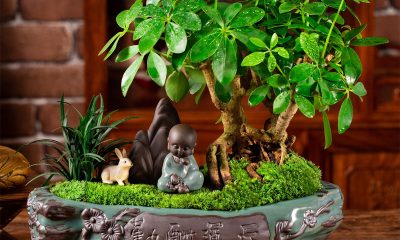
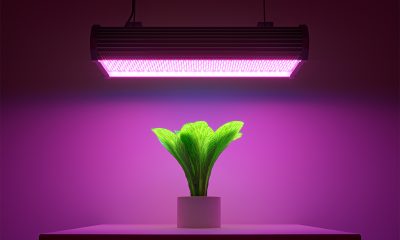





Loading...
New member
New member